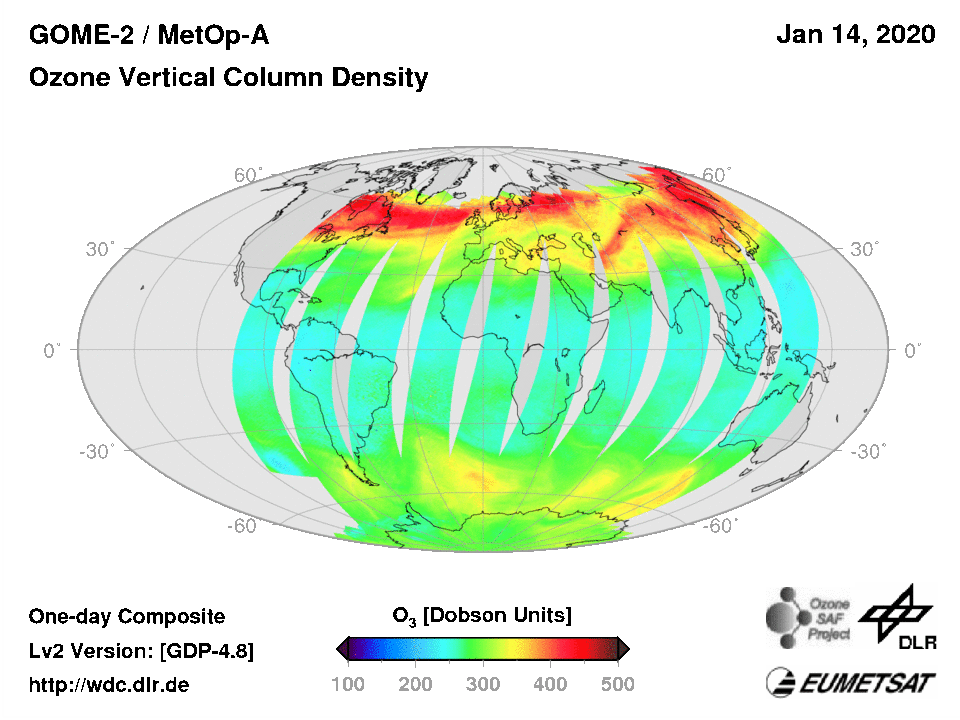Ozone GOME
« Return to Ozone Maps section

This image loads from an external website (opens in a new window)
The Global Ozone Monitoring Experiment (GOME) was launched on April 21st 1995 on board the second European Remote Sensing Satellite (ERS-2). The main purpose of the instrument is to measure global ozone distribution although it can measure a range of atmospheric trace constituents. GOME is a nadir-viewing spectrometer.
It works by measuring solar radiation (in the ultraviolet and visible spectral region - 240 to 790 nm) which is scattered by the atmosphere. The more radiation that is scattered, the higher the levels of ozone in the atmosphere. The sensor has a high spectral resolution of 0.2 to 0.4 nm sensed by four individual linear detector arrays each with 1024 detector pixels. The field of view may be varied in size from 320 km x 40 km to 960 km x 80 km. GOME radiances / reflectances and trace gas amounts are computed from raw data using the GOME Data Processor system.
This was designed and developed by the German Remote Sensing Data Center in cooperation with the Institute of Remote Sensing (University of Bremen/Germany), the Smithonian Astrophysical Observatory (Harvard, Cambridge/MD, USA), the University of Heidelberg (Germany), the Koninklijk Nederlands Meteorologisch Instituut (KNMI, The Netherlands), and other institutions involved in the GOME Science Advisory Group. GDP is the only operational off-line ground segment of the GOME sensor.
